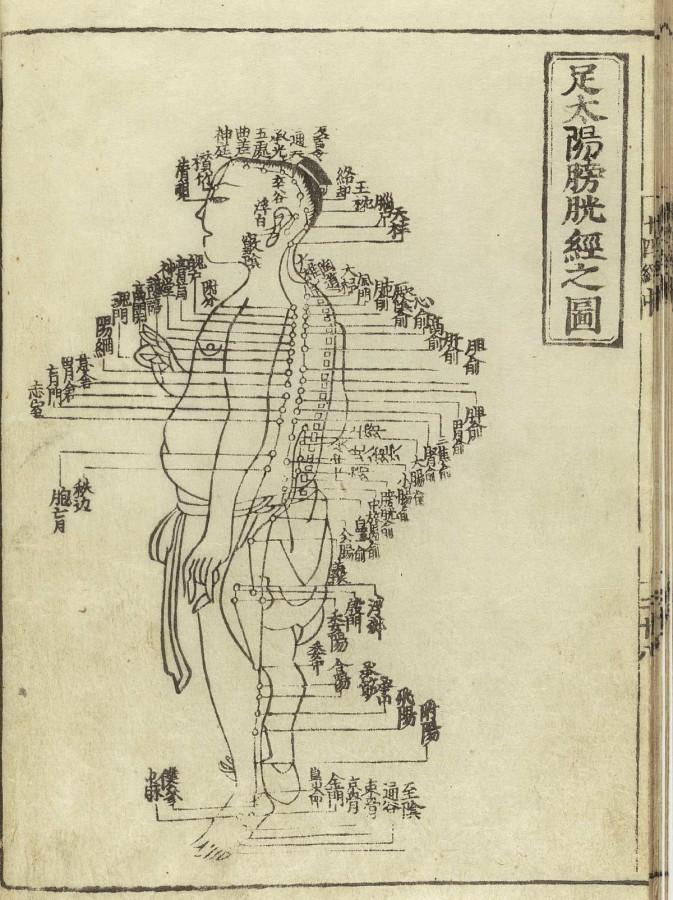The Medicinal Uses of Acupuncture
When Maya Burris was four years old, she sat nervously waiting for her father to come and give her acupuncture for the first time. Burris was terrified of needles, but allowed the treatment to happen anyway. It was difficult at first for her to get into acupuncture, but since she has, she has found that it works amazingly well for her and she would recommend it to nearly everyone. Although acupuncture could benefit most people, only a small percentage of the population in the United States take advantage of it.
Acupuncture is the stimulation of specific points along the skin, using thin needles. Acupuncture originally tried to release the flow of the body’s energy, also called “chi” or “qi,” by stimulating points along 14 main energy pathways or meridians. Inherent in the concept of the Chinese character “qi” are ideas such as movement and a progressive, transformative progress. Although many people do still believe that chi is the reason that acupuncture works, other people, specifically scientists, have different ideas.
Scientists say the needles cause the body to release endorphins that interact with the opiate receptors in the brain to reduce how pain is felt. Also, acupuncture causes change in brain activity by stimulating specific meridians in the body. This change has been seen in MRI’s taken before and after acupuncture treatments. Lastly, acupuncture affects cell growth since the neurons in cells are sensitive to energy change in the body. With these discoveries, both chi and modern science play into the understanding of why acupuncture works.
Acupuncture is generally thought to have originated in China, first being mentioned in documents dating from a few hundred years leading up to the Common Era. It is believed that sharpened stones and bones from about 6000 BCE were used for acupuncture treatment. Interest in acupuncture in China declined from the 17th century because it was perceived as superstitious and irrational and in 1929, it was outlawed along with other forms of traditional medicine. In 1949, acupuncture was reinstated due to it being a practical means of providing health care for China’s large population.
Many people use acupuncture treatment to help chronic pain, specifically back pain, but that is only one of its many uses. According to WebMD, there are 28 issues that acupuncture has been proven to treat. Some of these include sleep deprivation, fertility problems, anxiety, migraines and depression. Burris has gotten treatment for many issues over her lifetime and believes that it could almost work for anything. “I’ve never gone away from a treatment without feeling a little bit better,” Burris said.
Burris has had more luck than Community High sophomore, Lindsey Williams. When Williams tried acupuncture for back pain, she didn’t see any change. Even though Williams didn’t see results herself, she recognizes that many people do see positive change. However, there are some people who believe that acupuncture doesn’t work at all. Skeptics think that the reason people feel better after acupuncture is due to the placebo effect. Since the patient believes it is going to make them feel better, it does. Some scientists agree that the placebo effect comes into play in the relief felt by acupuncture patients, but if relief is felt at all, it is successful.
Veterinarians have used acupuncture to treat animals with conditions such as arthritis. According to “The Effect of Acupuncture on the Nervous System” by Claire Walker, dogs that have received acupuncture have been able to walk, run and play again. This gives credibility to the fact that acupuncture does work in ways other than the placebo effect. Dogs don’t go into the procedure with preconceived ideas about how the treatment will affect them.
In the United States, about three million people have received acupuncture treatment, and in France, one in five people have tried it. It is popular all around the world because of its wide arrange of uses and very little risk. If the acupuncturist has proper training, the only risk should be a slight soreness around the site of the needles. However, if needles are unsanitary or placed incorrectly, it can lead to infection and even punctured organs.
A common misconception with acupuncture is that it is similar to getting many little shots. The needles used in acupuncture are actually entirely different from those used to give injections. If done correctly, there is no pain. “You can’t even feel it when it goes in,” Burris said. “It’s really more of a calming and healing experience than a painful one.”




